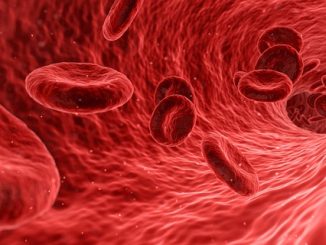
A collaborative effort among scientists from the Lomonosov Moscow State University and Stockholm University has added more proof to a belief that has been steadily gaining more acceptance — that aging is a disease, and that it can be stopped or at least, slowed.
As it is, there are numerous ongoing studies related to aging and anti-aging solutions. There’s the use of Yamanaka factors. There’s protein adjustment ; and the use of a VCAM1 blocker — VCAM1 is a protein that increases in amount as people age.
And there’s also the use of blood plasma.
This time, the anti-aging study’s focus is on the mitochondria — referred to as the cell’s powerhouses because their main function is to produce the energy needed by cells to function properly. By developing a new compound they are calling artificial antioxidant SkQ1 to target the mitochondria, the team of scientists led by Russian biologist Vladimir Skulachev was able to slow down aging in their test subjects.
The experiments involved a special strain of genetically-modified mice which were created and characterized in Sweden. They introduced a single mutation into the genome of the mice, and this resulted in accelerated aging and early death of the mice. Instead of a typical 2-year life span, the mice lived less than a year. Moreover, they also developed what were clearly age-related diseases.
In another experiment, a group of mutant mice aged 100 days was given pure drinking water, while another group was given minute doses of SkQ1 through their drinking water. Theoretically, the antioxidant compound should be able to protect the cells from the mitochondria’s toxic byproducts, also known as free radicals. Luckily, it did.
As the mice reached the age range of 200 – 250 days, differences between the two groups became evident. The control group (the mice which were given pure drinking water) seemed to age faster. They lost weight, experienced lower body temperature, developed osteoporosis and alopecia, became less mobile and showed less oxygen consumption.
Conversely, all those traits associated with aging did not develop as quickly in the mice dosed with SkQ1. In fact, some of the aging attributes were totally nonexistent.
Professor Skulachev says the results of their work are valuable on two fronts. On the theoretical side, it confirms how important the role of the mitochondria is in the aging process. On the practical side, the study “opens the way to the treatment of aging with mitochondrially targeted antioxidants.”
With the success of their experiments, the team has now progressed to developing SkQ1-based drug treatments. The first drug called Visomitin eye drops is already commercially available in Russia, and has already passed phase 2 clinical trials in the U.S. The next potential drug will be available in oral form and is currently undergoing clinical trials in Russia. If results are favorable, the drug can be approved for use in the next 2 – 3 years.
The results of the breakthrough paper have recently been published in the journal “Aging“.
Disclaimer: This page contains affiliate links. If you choose to make a purchase after clicking a link, we may receive a commission at no additional cost to you. Thank you for your support!




Why eye drops??? The mice were taking it with drinking water. Sometimes I think these researchers are idiots. http://www.facebook.com/ImmortalityResearch The blood experiments were first started about 60 years ago and then abandoned and forgotten despite successful results. I don’t believe in conspiracies but even I have to admit that looks suspicious. As if they aren’t even really trying to cure aging.